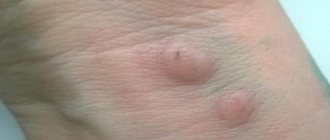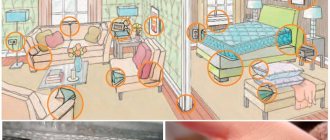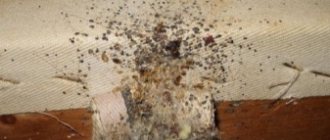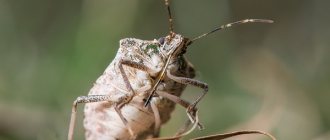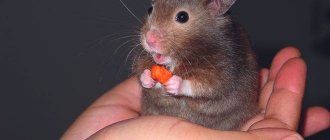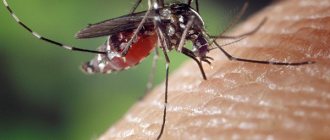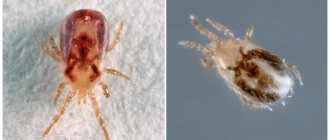Habitats
When it is suspected that bed bugs have appeared at home, it is necessary to inspect the entire apartment/house. These insects choose habitats closer to humans. Such preferences of parasites are determined by the peculiarities of their life activity. So, house bugs feed only on blood; they are not interested in other food.
In addition, the movement speed
pest control is so low that they will not be able to escape if necessary. For these reasons, they strive to be as close to humans as possible.
Favorite habitats:
- mattress;
- sofa upholstery;
- bed frame;
- baseboards;
- the backs of paintings and the backs of other furnishings, including wall clocks,
A mattress that is extremely infested must be destroyed (burnt) class=”wp-block-separator is-style-wide”> In the design of a folding sofa there are many places where bedbugs can breed class=”wp-block-separator is-style- In some cases bedbugs can be found inside sockets and switches
If there is little space left near a person’s bed due to an increase in the number of pests, the parasites occupy neighboring areas: the underside of the carpet, the back walls of cabinets, bedside tables, as well as the internal surfaces of this furniture, armchairs, sockets, and sometimes even curtains. When the sofa upholstery is damaged, parasites accumulate in large quantities under it.
The same thing happens with pillows,
blankets and mattress. Pests look for any loopholes, which opens the way for them to the most secluded places in the apartment.
Much less often, bedbugs make nests inside toys and household appliances that have not been used for a long time. However, it is impossible to meet these insects in the bathroom, hallway or kitchen, because people do not spend the night here, and it is very difficult for insects to get through the entire apartment to the bedroom or children's room - this will take a lot of time and effort.
How to find bedbugs
If your home is infested, it will not be difficult to detect parasites. There are a number of signs you should pay attention to:
- specific smell;
- presence of excrement;
- husks or shells of parasites;
- empty shells of eggs are formations of a milky hue; on one side you can see a hole through which the larvae appear; upon careful examination, clutches are revealed.
Distribution routes
Before choosing a way to get rid of bedbugs in clothes, you need to determine the reason for the appearance of such parasites at home:
- from neighbors: pests purposefully flee to other territories, because they become crowded due to the large number of bedbugs on the infested property; in addition, insects leave their homes during disinfestation; in this case, most of the nests are discovered, and the remaining bedbugs are exposed exposure to a toxic substance;
- on animal fur, this factor can become key if there are pets at home;
- Parasites also travel inside furniture (used or new), and in household appliances, but this happens accidentally;
- along with the belongings of a person who lives in an infected facility: inside bags, wallets, wardrobe items.
How to treat clothes against bedbugs?
What to do if insects were noticed in a person’s wardrobe. First of all, don’t panic and don’t rush to throw away or burn expensive new clothes. Removing bedbugs from clothes is easier than it might seem at first glance.
Ineffective methods of processing things
- taking things out into the cold;
- normal wash;
- leaving the infected apartment for 2 weeks;
- hanging items of clothing outdoors for long periods of time.
- bedbugs hiding in jeans
Why won't this help?
The thing is that, like many insects, bedbugs are capable of falling into suspended animation. When all vital processes slow down, and the body is able to survive both frost and lack of food.
Killing bedbugs in clothes by washing is an ineffective way. Bedbug larvae can tolerate temperatures up to 60 degrees. The shell of the eggs has a sticky structure that does not allow them to peel off from the fabric even after contact with water.
Not every item of clothing can withstand a water temperature of 90 degrees, and there are other effective ways to treat items against bedbugs.
Working methods to get rid of bedbugs in clothes.
- Taking things to the dry cleaner. In this case, you need to indicate the real reason for the appeal.
- Using steam when ironing. Particular attention should be paid to the seams.
- Treating things against bedbugs with special insecticides.
- Use the freezer for a long time and at a minimum temperature. At -25 and below, larvae and adults die.
- Vacuuming clothes. A special attachment for clothes and maximum power are required.
You can achieve satisfactory results in killing bloodsuckers by combining several methods. For example, use a steam cleaner after washing and drying.
If the fabric is delicate, you can put it in the freezer, and then send it to the dry cleaner. Treat clothes such as coats with a vacuum cleaner and then steam them. Disinfecting clothes against bedbugs with chemicals gives the fastest results. But it requires compliance with a number of rules and precautions. You should try to use the least harmful formulations for humans. After the treatment, be sure to wash and rinse the clothes well.
A vacuum cleaner will not be able to remove all insects, but a certain effect will be noticeable.
To get rid of blood-sucking annoying insects, it is best to seek help from specialists.
Appearance of bloodsuckers
Bed bugs are different from other household parasites (mosquitoes, fleas, lice). The body shape is round. These insects are brown in color and flat, which allows them to penetrate into any crevices, even the smallest ones. However, after eating, the pests increase in volume.
Their body swells, which makes it easier to kill pests. In comparison, when hungry, they are difficult to kill. Under the influence of mechanical loads, insects are not destroyed, because their body is dry and hard. It will take a lot of effort to crush the pests with a heavy object.
Parasite size
small - up to 8 mm, more often the body length does not exceed 6 mm.
The larvae are light in color. They are much smaller (1.5 mm at the initial stage of growth, increasing by 0.5-1 mm every week). Other external signs are the same as in adults.
However, the larvae bite painfully, because some body functions do not yet work for them. A sexually mature individual bug most often has a flattened body about 6 mm long.
What do bedbugs look like?
In order not to confuse bedbugs with other household parasites (ticks, lice, cockroaches), you need to imagine what they look like. Characteristic external signs of adult individuals are:
- Flattened body. Its shape, length and color depend on the degree of blood saturation. In a hungry state, bedbugs are no more than 4 mm in size, light or dark brown in color, and have a strongly flattened body. After eating, they increase to 8-8.5 mm in length, become more rounded and acquire a reddish or black color (depending on when the insect last fed).
- Modified oral apparatus. This is a piercing-sucking proboscis that extends from the anterior edge of the head. It is adapted to pierce the skin and suck out blood.
- Lack of wings. Insects do not fly, although they have small wing flaps.
Arthropods have 6 short legs, antennae on the head and a dense chitinous shell.
The larvae are smaller in size: when emerging from the egg they are 0.5 mm long, and as they grow they reach 2 mm. They are characterized by a white or light yellow color. Otherwise, the appearance of young individuals is the same as that of sexually mature individuals.
What kind of clothes do parasites like?
The type of fabric plays an important role. If you are wondering whether bedbugs live in clothes, the answer will be yes, but only if we are talking about lint-free material. For example, parasites do not like terry. The lint prevents them from moving. Bedbugs do not distinguish other types of fabrics, because they are similar in appearance: quite dense, pile, if there is any, it is small, and does not interfere with movement.
When studying the question of whether bed bugs can live in clothing, it is necessary to take into account the factor of contact of the material with the human body. Considering that parasites react to the smell of blood, as well as carbon dioxide released by the body, the most suitable types of clothing for them are pajamas and underwear, for example, T-shirts, shirts. Suitable for living and any home clothes.
Besides,
parasites choose things with a lot of folds, pockets, and many seams.
If you suspect the appearance of bedbugs on your clothes, check the seams first
Which one do they like?
Insects prefer models with numerous seams , in which they can easily hide. They are especially likely to settle in pajamas, home clothes, and underwear, since this is where body odor lingers the most. If you notice small brownish spots on things, it means they live on it.
INTERESTING! Can bedbugs bite through clothing? No, their mouthparts are not so powerful for this. Although their bites are unpleasant, especially in children.
But insects do not like fur products , because their paws cannot catch on the fur and they are not able to move on it. In addition, fur models have insufficient contact with the body, so pests have nothing to do there.
Is it possible to bring bedbugs home from guests on clothes?
If friends/relatives have parasites at home, there is a high probability that guests can transfer the insects on themselves or their belongings to uninfested areas. The opposite situation is also possible, when parasites are discovered after going to a friend’s house. Most often this happens by accident.
For example,
If there are a lot of insects in the apartment or there have been no people at home for a long time, and guests immediately came after the trip, pests appear during the day in search of food, crawling into different secluded places closer to the victim.
Bedbugs have established a colony in a suitcase
Signs of the presence of bedbugs in clothes
The likelihood of bedbugs being present in clothing increases if the closet is located in the bedroom - in a dark, warm place with moderate humidity. They prefer stale items or dirty items with a human smell - pajamas, bathrobes, underwear. Bed bugs can lay eggs in any items except fur. The long, smooth fibers are not convenient for movement; the legs of insects cannot cling to them.
Blood-sucking parasites initially hide in the folds and seams of clothing, but then spread throughout the house in search of a more secluded place. This is one of the ways they appear in a living space. To protect yourself from such unpleasant events, you should carefully inspect each item of clothing after each trip while disassembling your suitcase. Bedbugs die at temperatures above 50 degrees. Therefore, the best option is to wash all the things you took with you on vacation in hot water.
How can you tell if blood-sucking parasites have settled in your closet? Signs of the presence of bedbugs in clothes:
- there is a sharp unpleasant smell in the closet, reminiscent of cognac or fermented berries;
- translucent remains of chitinous cover after molting insects;
- dark and brown spots are the remains of excrement and crushed individuals;
- itching, swelling, bite marks and pain in areas of the skin that have been attacked by parasites.
If you suspect bedbugs in your home, you must first inspect clothes with a large number of pockets, seams and folds, made of lint-free fabric. They do not like terry material with long loops, as it is difficult to move around.
Signs of the presence of insects
Having discovered traces of bedbug bites on the body, and having found them from a nest on the bed, you need to equally carefully examine the furniture and things in it. If there is an unpleasant characteristic smell in the closet or dressing room, then perhaps insects have already settled here. Stains on clothing of unknown origin will also indicate the presence of parasites. The fabric easily absorbs biological fluids secreted by bedbugs. Brown and yellowish spots remain in these places. Upon closer inspection, you can find dark grains, scales from the chitinous shell, and shells from eggs. All this is a clear sign that bedbugs have made their nests in clothes, which means that treatment of things cannot be avoided.
Nest
Do bedbugs bite through clothes?
Bedbugs are nocturnal. As soon as the inhabitants of the house go to bed, they go out in search of the victim. The smell of blood and carbon dioxide is attractive to them. Do bedbugs bite through clothes? Parasites do not have such powerful jaws that would allow them to cope with tissue. To attack, they choose areas of skin not covered by underwear. Sometimes, in search of prey, adults and larvae crawl under the blanket. Children with delicate skin are most at risk of attack, as well as areas of the body in adults where blood vessels are located as close to the surface as possible.
Features of parasitism
Can bedbugs live in clothes? The answer is clear - they can. But the likelihood of being bitten decreases if a person sleeps in pajamas. Particularly affected are areas of the body that are not covered with a blanket during the night.
Bloodsuckers bite where blood vessels are located close to the surface of the skin. Most often, itchy marks appear on the legs and arms, back, neck and shoulders. In children, the face may be affected.
The parasite's mouthparts are not designed to pierce clothing. Therefore, if a person rests in pajamas at night, the likelihood that he will be bitten by bloodsuckers is minimal.
More often, those parts of the body that are not covered with a blanket at night are attacked. However, a blanket will not stop a very hungry bug - it will crawl under it and still drink blood.
For punctures, they choose those places on the body where blood vessels are located under the skin. More often, bite marks are found on the following areas of the body:
- neck;
- hands;
- legs;
- back;
- shoulders.
When a person puts on night pajamas, it is as if he is gradually inviting bedbugs to come to him. But as long as a person is awake, they will not bite. This will happen when he falls asleep.
How to detect bedbugs
If there are a small number of bloodsuckers in a suspicious room, the likelihood of finding bedbugs in the wardrobe is quite small.
But if the room is heavily infested, and the closet is located in close proximity to the sleeping area, then bloodsuckers will certainly take a liking to this piece of furniture. Often, even for laying eggs, the female chooses a closet with clothes - it is comfortable, warm and dark.
When looking for bed bugs, you should definitely check the contents of your wardrobe.
It is believed that outfits made of synthetic fabrics attract parasites the most, since such an alluring and attractive human smell for parasites does not disappear for a long time.
When checking clothes for the presence of bed parasites, you need to check every seam and fold, although this will take quite a long time.
You should not neglect these recommendations: by detecting a clutch of eggs or even a cluster of bloodsuckers, you can significantly reduce the number of parasites, even without resorting to chemical treatment.
What time do bedbugs bite?
Despite popular belief, bedbugs are not afraid of daylight. Evolutionary processes have made bedbugs nocturnal parasites, since at this time their food source lies dormant in bed and does not pose a risk to life. Having drunk blood, the parasite seeks shelter.
During the day, insects prefer to hide in hard-to-reach places. And although the vision of bedbugs is designed for the infrared spectrum, the feeling of hunger can force bedbugs to bite the victim even in the light. They will benefit from a sunny day and artificial lighting. Therefore, sleeping at night with the sconce on, in the hope of preventing parasites from leaving bites on the human body, is mostly pointless.
Do clothes need to be processed?
At the first signs of bedbugs appearing in an apartment, every person has a desire to get rid of them as quickly as possible. Have you brought insects back from vacation and noticed their presence immediately upon arriving home? What to do in this case? Do I need to treat my clothes or is it better to get rid of them right away? You can apply a chemical to the item of clothing or use high temperature. This will destroy all individuals on the tissue and prevent their further spread.
The small size of clothing allows you to use different methods of baiting bedbugs. At home, it is easy to organize the death of parasites by exposure to high temperature:
- Hot steam treatment. You can use a steam generator or an iron.
- Wash at high temperature.
- Boiling.
An alternative option is exposure to cold. Residents of private houses can leave their clothes in the yard for several days. The death of bedbugs at a temperature of -15-20 degrees occurs within 24-48 hours. Apartment owners can place clothes for long-term storage in the freezer.
Another effective and proven method is the use of chemicals. It is convenient to treat clothes with an insecticide in the form of an aerosol, but you can also purchase a concentrated solution. After applying the toxic composition, the product is placed in a plastic bag and hermetically sealed so that the bedbugs do not scatter in search of a safe place. After a few hours, the treated clothing is carefully removed from the bag and washed thoroughly. This allows you to eliminate unpleasant odors and get rid of traces of chemicals. It is recommended to dry clothes in the fresh air.
Opponents of insecticides prefer to use folk methods and household products. These are aromatic fresh and dried plants, tinctures and decoctions, vinegar, turpentine and alcohol. A pungent odor can repel blood-sucking parasites, but not destroy them. For this reason, traditional methods are better suited as preventive measures. In the closet with clothes and throughout the house you can place bunches of mint, lavender, tansy, wormwood, and use decoctions of these herbs to wipe the walls, floors and interior items. Plants can be purchased at the pharmacy or collected in the summer. An alternative option is to use essential oils.
Can bedbugs live in things?
Returning to the topic of the article, it is important to note one more significant nuance. As noted above, bed bugs prefer to hide in secluded corners during the daytime. A wide variety of things that a person rarely uses or moves can be considered as such. This includes personal wardrobe items that are stored in the closet. Or furniture, paintings, and other decorative items hanging on the walls or standing on the floor.


